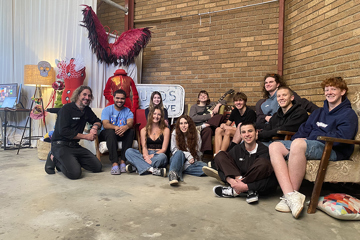The Decade Of Streaming, Binging & Socials: How The '10s Changed How We Consume Telly
Guy Davis reflects on the ways our TV viewing habits have totally changed since the start of the decade – from the rise of social media conversations, to the domination of streaming services, to our inability to resist a binge-watch.
As we edge towards the end of another decade, there’s a natural tendency to step back and try to take a big-picture view of what we’ve collectively experienced. It gives us a comforting sense of perspective, not to mention maybe some indication of where we may be heading.
What we collectively experienced in the 2010s, however, was the ongoing fragmentation of that collective experience, particularly as far as television is concerned. There’s long been a tendency to romanticise TV as a bonding experience, whether it’s actually watching a show or discussing it afterwards, but that kind of thinking perhaps belongs to a time when we were all operating on the same schedule and limited to a smaller amount of options. And that’s not really the case anymore.
It’s disingenuous to suggest that the era of the group-watch is over – of course families and friends are still enjoying TV in shared company. But we’ve also been glued to our individual screens for some time now, the advent of streaming services and on-demand video allowing any punter not only the opportunity to watch what they want when they want, but also how they want in terms of quantity.
While the ‘binge-watch’ is not exactly a new phenomenon, it really wasn’t until this decade, and mainly with the rise of Netflix, that it became a legitimate event. There was no shame in declaring that you were setting aside a day or two to devour the new season of Stranger Things or The Crown as soon as it dropped, and you could do so at your own pace and convenience. That’s an almost unprecedented level of control for the viewer, whose power was previously pretty much limited to changing channels or turning the TV off.
Now there have certainly been shows that seemingly everyone was weighing in on at once – whether we were weeping uncontrollably over the death of Patrick on Offspring or hating on the final few episodes of Game Of Thrones – but the new flexibility of availability (your own in-house video store is open 24/7!) coupled with the ‘peak TV’ phenomenon, where multiple commercial TV, pay TV and streaming service outlets are churning out content, content, content, has ensured that there is pretty much something for everyone to snack or binge on.
Don't miss a beat with our FREE daily newsletter
"A much broader and deeper pool of talent has had the opportunity to take part in the process of storytelling and production."
Indeed, it’s hard to find a niche that has gone unfilled, and that’s a great thing in so many ways. Over the last ten years, diversity and inclusivity have gathered momentum and a much broader and deeper pool of talent has had the opportunity to take part in the process of storytelling and production, sharing perspectives and attitudes that have previously been marginalised or muted, and audiences subsequently have access to so much more (see Transparent, Redfern Now, Pose and Insecure, to name just a few).
Still, there’s a reason the saying ‘spoilt for choice’ exists. Having a wealth of platforms offering audiences a wealth of material, and adding to that treasure trove day after day, can result in option overload and a nagging sense that we may be missing out on something great. (There are, of course, worse problems to have in this life than too much good stuff, although there’s a fear that it could result in the creation of comfort zones and a reluctance to venture into new territory.)
One could speculate it’s the reason the recap (and even the social media conversation) has taken over from the review as the new primary mode of TV criticism – you get the gist without putting in the hours, and if you’re intrigued by what’s been discussed it’s not too difficult to track down the episode in which you’re interested.
And there’s going to be more to pique your interest as we enter the 2020s, it seems. Every platform worth its bandwidth has an on-demand library enabling you to catch up with what you’ve missed whenever works for you, and the powerhouse stations and streaming services are getting new competition from tech and showbiz behemoths like Disney and Apple, which have more than enough capital in their war chests to attract A-list talent to their big-ticket productions. The screen doesn’t look set to fade to black any time soon.







